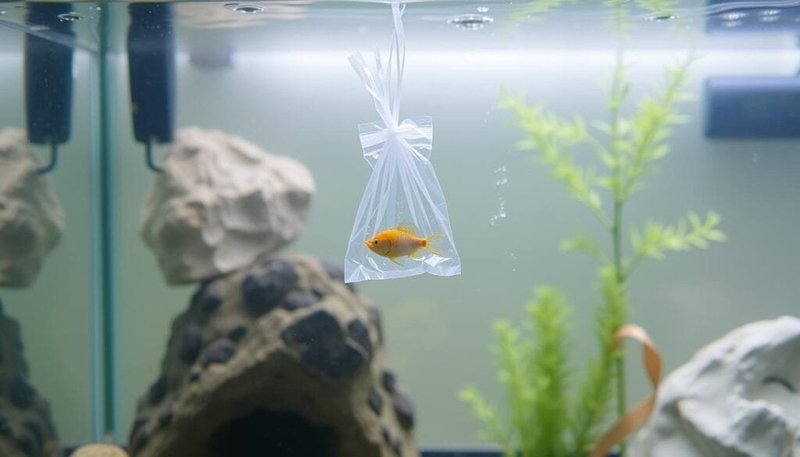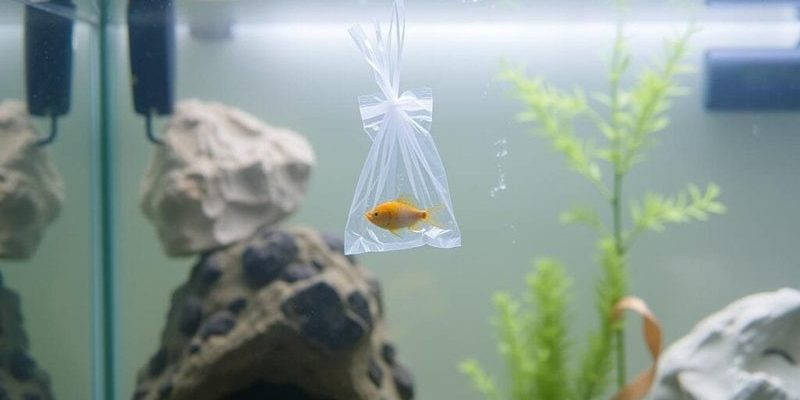
There are many types of butterflyfish, each with its unique personality and needs. Whether you’ve chosen the stunning Raccoon Butterflyfish or the striking Longnose Butterflyfish, understanding the acclimation process is essential for their well-being. Think of this guide as your straightforward roadmap, complete with the details you need to make this journey as smooth as possible.
Understanding the Importance of Acclimation
Acclimation is a crucial process in introducing any new fish to your aquarium. Here’s the thing: when butterflyfish are taken from their natural habitat, they can experience shock from changes in water temperature, chemistry, and even movement. Acclimation helps to ease this transition, ensuring your new fish can adapt quickly and comfortably.
Essentially, it’s like preparing a delicate dessert. You wouldn’t toss all the ingredients together without considering their individual qualities, right? Similarly, acclimating your butterflyfish means gradually introducing it to the tank environment. Doing this reduces stress and increases the chances of your fish thriving in its new home.
You might be wondering what happens if you skip this process. In some cases, it could lead to serious health issues for your fish, like poor appetite or disease. By taking the time to acclimate, you’re setting your fish up for a longer, happier life in your aquarium.
Gathering Your Supplies
Before you get started, let’s make sure you have everything you need to acclimate your new butterflyfish. Here’s a handy checklist to help you out:
- Aquarium water, ideally the same temperature as your new fish’s bag
- A small bucket or container for mixing
- A net for transferring the fish
- A timer or clock to keep track of the process
- Water conditioner, if necessary
Make sure your aquarium is in good condition beforehand. Check that the water parameters, like salinity and pH, are suitable for your butterflyfish. If you’ve got everything prepped and ready to go, you’ll feel more confident about the acclimation process.
Here’s a pro tip: always keep a close eye on your butterflyfish during this transition. Being observant can help you catch any signs of stress or trouble early, which is crucial for its well-being.
Choosing the Right Acclimation Method
There are a few different methods you can use to acclimate your butterflyfish. The most common ones are the drip acclimation method and the float method. Let’s break them down.
Drip Acclimation Method
This method is often considered the best way to introduce your new butterflyfish. Here’s how it works:
1. Place your fish in a bucket or container with the water from its transport bag.
2. Use a siphon or airline tubing to create a slow drip into the bucket. Aim for about 1 to 2 drops of water per second.
3. Continue this process for about 30 minutes to an hour, allowing your fish to gradually adjust to the new water parameters.
The slow drip is key here. It gives your fish time to adapt to changes in temperature and chemistry without feeling overwhelmed.
Float Method
If you’re looking for a simpler option, the float method might suit you better. Here’s a quick step-by-step:
1. Turn off any tanks and lights.
2. Place the sealed bag with your butterflyfish in the aquarium, letting it float for about 15-20 minutes.
3. After this time, open the bag and add about a half-cup of tank water to it.
4. Wait another 10 minutes, then repeat this step a couple of times.
When you’re ready, you can gently use a net to transfer the butterflyfish into your aquarium, letting any remaining bag water stay behind.
Transferring Your Butterflyfish
Once your butterflyfish has acclimated to its new environment, it’s time for the big transfer. This part is crucial, so take your time. Using a clean net, gently scoop up your fish from the bucket or bag without adding any of that bag water to your tank.
Remember to be gentle. You want to avoid any sudden movements that might stress your fish. Once you’ve got the butterflyfish in the net, slowly lower it into the tank. Ideally, you want the fish to swim out on its own rather than forcing it out of the net.
It’s normal for your new friend to hide for a bit as it adjusts. Just like moving to a new neighborhood, a little time to settle in can make a world of difference.
Monitoring Your New Fish
After you’ve placed your butterflyfish in the aquarium, it’s essential to keep a close eye on it over the next few days. Watch for signs of stress, such as hiding constantly or not eating.
Here’s what you can do to help:
– Maintain water quality: Regularly check the water parameters to ensure they remain stable.
– Feed appropriately: Offer a balanced diet suitable for butterflyfish, and observe if it’s eating well.
– Create a calming environment: Ensure your tank has plenty of hiding spots and decorations that mimic their natural habitat.
Taking these steps not only helps your butterflyfish adapt but also creates a thriving environment for all your aquatic friends.
Common Challenges and Troubleshooting
Sometimes, things don’t go as smoothly as planned even after following all these steps. Here are a few common challenges you might face and some simple fixes:
– Not eating: If your butterflyfish isn’t eating, it may still be stressed from the move. Give it time and try offering different foods, such as frozen or live options.
– Hiding excessively: While hiding is normal, too much of it can indicate stress. Ensure there are hiding spots and observe for signs of aggression from other fish.
– Signs of illness: If you notice unusual behavior, like rapid gill movement or discoloration, it could be a sign of illness. In such cases, consult an aquarium expert for guidance.
By being proactive and addressing these issues as they arise, you can help your butterflyfish adapt more quickly.
Final Thoughts on Acclimating Your Butterflyfish
Acclimating your new butterflyfish to your aquarium doesn’t have to be daunting. With some preparation and patience, you can set the stage for a smooth transition. Just remember to take it slow, monitor your fish closely, and give it the time it needs to adjust.
Whether you’re an experienced aquarium keeper or a complete beginner, following these steps can ensure your butterflyfish feels at home in no time. Enjoy the journey of caring for your new aquatic friend and watching it thrive in your aquarium!

